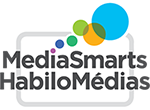How Targeted Ads Work
We start with a title card on a bright turquoise background that reads, ‘How Targeted Ads Work,’ in white text. A narrator explains that many free online services, and even some that require payment, generate revenue by displaying ads, most of which are targeted ads. The video explores how these ads operate and their impact on our privacy.
As the narrator speaks, we see a series of animated illustrations. First, a tablet is shown with multiple ads popping up on its screen. Then, we see a person sitting with a laptop, an ‘ADS’ page open on the screen. Beside them, there’s a lightbulb, a plant, a megaphone, and coins with dollar signs, suggesting ideas, growth, and revenue from advertising. Next, we see a hand holding a phone with a ‘PAY’ button on the screen. Around it are various icons symbolizing likes, hearts, and security, giving the impression of social media interaction. A hand taps on the ‘PAY’ button on the smartphone screen, transforming the smartphone into a view of a credit card with card number, CVV, and EXP date information.
The narration then shifts to the common marketing phrase: ‘Half the money I spend on advertising is wasted, but I don’t know which half,’ displayed in white text on the turquoise background. Following this, we see a cartoon-like robot on a television screen. The video transitions to illustrations of a target symbol, followed by icons representing age, gender, and income—demographic factors commonly used in targeted ads.
After that we see a student throwing her hat in the air with stars floating about, then it transitions to a woman standing in front of a computer pointing at a cloud icon, surrounded by symbols like a play button, a picture icon, a phone, and an envelope, which represents cloud storage. After this we see a fisherman on a small boat catching a fish and then a woman looking at clothes for sale on her phone with a banner labeled ‘Cyber Monday’.
The video shows logos of Chrome and YouTube and an arrow connecting those to Google which states that companies that own multiple platforms are capable of sharing user data among all these platforms. Following this we see a woman on a laptop looking at charts and data, then a man next to his car looking at a phone, and then a drawing of a head with several health signs floating around it. As these appear on screen the narrator details how data brokers are able to build extensive profiles about users and how AI can use protected traits such as race and health conditions for targeted advertising which then transitions to people holding up a rainbow flag. Lastly, the narrator shows a woman depressed, a man reviewing files on his computer, and a man on his phone on social media. The narrator suggests that we could be displayed with ads not tailored to our preference or have our data collected by ad companies to increase insurance prices as we age.
The video concludes with an advocate to take control on how your data is being collected by these ad companies.
